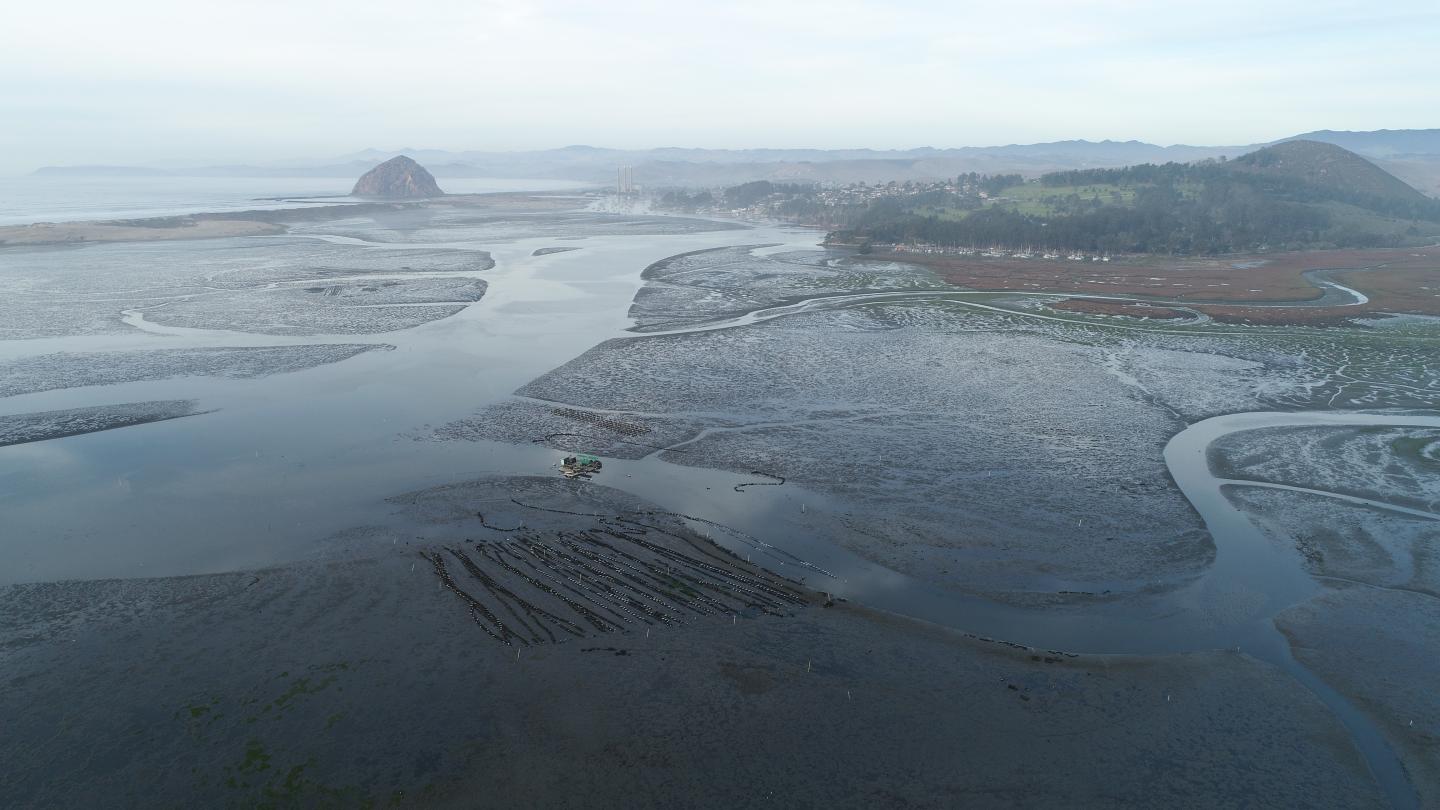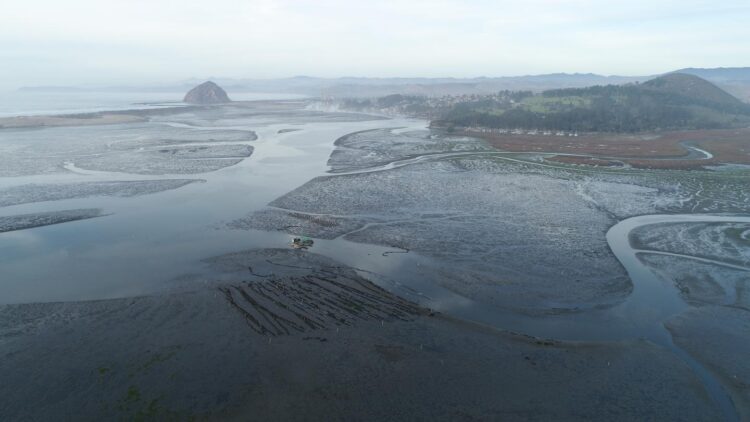Following an unprecedented estuary-wide collapse of the seagrasses in Morro Bay, scientists documented extensive erosion and geomorphological changes, which may indicate future shoreline and coastal habitat changes.

Credit: Ryan Walter, Jennifer O’Leary and Kyle Nessen
The large-scale loss of eelgrass in a major California estuary — Morro Bay — may be causing widespread erosion, according to a new study from California Polytechnic State University.
In recent years, Morro Bay’s iconic eelgrass beds, which provide the estuary’s primary living habitat, experienced a massive die-off, declining more than 90 percent since 2007. Efforts to restore the eelgrass have had mixed success in many parts of the bay, and this seagrass is now only found close to the mouth of the bay and sporadically in other regions.
Seagrass systems are found throughout the world and provide many ecosystem services including fish nursery habitats, forage for migratory birds, nutrient cycling, carbon storage and sediment stabilization.
“The loss of eelgrass in the Morro Bay estuary is analogous to the loss of trees in a rainforest,” says lead author and Cal Poly physics Professor Ryan Walter. “Not only do you lose the plants, but you also lose all of the services that they provide for the entire ecosystem.”
By slowing down currents and decreasing wave forces, seagrasses help stabilize sediment and prevent erosion. Over the last century, Morro Bay has been building up sediment quickly and is dredged annually.
After the eelgrass died off, however, erosion took place in more than 90% of the places where eelgrass previously grew. In some places, the erosion removed enough sediment to cause the water depth to increase by as much as 50% compared to when eelgrass was present. At the mouth of the estuary where eelgrass remains, sediment is still building up as it did in the past.
“These erosional changes are sizable considering that Morro Bay, a modified estuary, has historically suffered from accelerated sedimentation,” Walter said.
Globally, seagrasses in the nearshore coastal environment are among the most threatened ecosystems on the planet. Generally, losses of seagrasses can lead to increased shoreline and estuarine erosion.
On the other hand, it is possible that the erosion in Morro Bay may create new opportunities for seagrass recovery by increasing the depth and suitable habitat for eelgrass in certain locations. Recent restoration attempts by the Morro Bay National Estuary Program have been successful, and there is evidence of a partial recovery in portions of the bay. Tracking changes in sediment in places like Morro Bay will become increasingly important as climate change is expected to drive sea level increases and shoreline change.
“Morro Bay is an estuary of national importance that is under transition with system-wide eelgrass loss, subsequent sediment loss and now some signs of eelgrass recovery. Understanding the dramatic changes in Morro Bay can help identify important factors for management and conservation of eelgrass-dominated systems globally,” said coauthor Jennifer O’Leary, former California Sea Grant Extension Specialist.
###
Media Contact
Ryan Walter
[email protected]
Original Source
https:/
Related Journal Article
http://dx.





